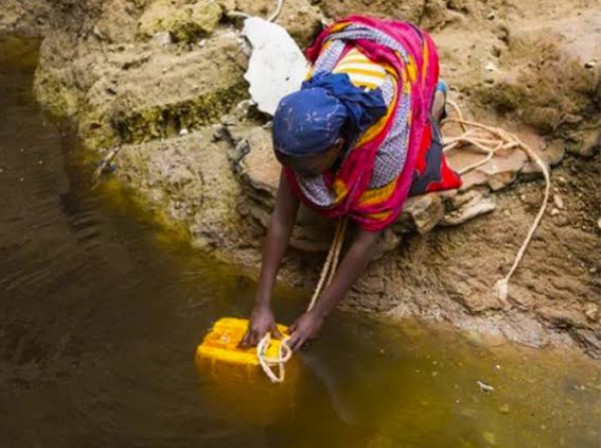Urban Life and Moral Decay.
How urban life has contributed to moral decay
There are a number of ways in which some people believe urban life may have contributed to moral decay. Here are a few examples:
1.Anonymity: Urban areas are often more densely populated than rural areas, which can lead to a sense of anonymity among residents. In such environments, individuals may feel less accountable for their actions because they don't feel like they know their neighbors or community members well.
2.Materialism: Cities often have a culture of consumerism and materialism, which can encourage people to focus on acquiring material goods rather than on building strong relationships and communities.
3.Social isolation: Urbanization can lead to social isolation, as people may not have the same sense of community that they would in a smaller, more rural setting. This isolation can make it more difficult for people to form and maintain strong moral and ethical values.
4.Higher crime rates: Urban areas tend to have higher crime rates than rural areas, which can create an environment where people may be more likely to engage in criminal or morally questionable behavior themselves, or to become desensitized to such behavior.
5.Stressful and busy lifestyle: Urban dwellers are more likely to live in fast-paced, hectic environments that can cause stress and anxiety. This can make it difficult for people to focus on their moral and ethical values, and to make good choices in their personal and professional lives.
It is worth to note however, that this is a topic with a lot of debate and not everyone would agree with the above perspective. Many people also argue that urban life can provide opportunities for community buildin and positive social interactions, and can foster creativity, innovation, and diversity that can lead to a more just and equitable society. Also, moral decay is a complex concept that may be a result of factors other than urbanization.
6.Another potential way that urban life may contribute to moral decay is through the erosion of traditional social structures and values. Urbanization can lead to the breakdown of traditional communities, as people move away from their families and traditional neighborhoods. This can make it more difficult for people to maintain strong cultural, religious, and moral beliefs.
7.In addition, urban environments can be more diverse and multicultural than rural areas, which can lead to cultural clashes and a sense of moral relativism. With many different cultures and belief systems present in urban areas, it can be difficult for individuals to maintain a clear sense of right and wrong.
8.Finally, urbanization may also lead to economic inequality, as the cost of living in urban areas is often higher than in rural areas. This can create a divide between the wealthy and the poor, and can lead to a lack of social mobility and a sense of hopelessness among those in lower economic strata. This can lead to a moral decay as people may resort to illegal means to provide for themselves and their families.
It's also worth noting that urban areas have unique strengths and opportunities in terms of fostering moral and ethical development. For example, cities can provide access to diverse cultural and educational experiences that can broaden one's perspectives and foster empathy and understanding of different perspectives. Urban areas can also provide access to social services and resources that can help individuals and families in need.
Citys are also an important center for civic and political engagement, which can provide opportunities for individuals to get involved in community building, volunteerism and activism to promote social and economic justice, inclusion and sustainability. This can help to strengthen community and foster social capital and a sense of civic responsibility.
Additionally, the nature of urban life itself, the fast pace and busy lifestyle, the exposure to diversity and different cultures, can foster personal and professional growth, a sense of resilience and adaptability, and can be a source of innovation and creativity.
while urban life can certainly havee negative effects on moral and ethical development, it is important to consider the complexity of the issue and recognize that urban areas can also provide unique opportunities for personal and social growth, and for promoting positive social change
To also point out that while urbanization can have negative impacts, these effects are not predetermined. The social, economic and political context within which cities are built and managed, can either mitigate or exacerbate these impacts.
Effective urban governance can help to address issues of social isolation and inequality, by creating inclusive and equitable communities through affordable housing, transportation and job opportunities, and by promoting the development of social and civic infrastructure.
Urban policies that prioritize the needs of all citizens and create opportunities for community building and civic engagement can also foster a sense of social cohesion and shared responsibility, and can help to counter moral decay.
In addition, urban areas can also provide opportunities for individuals to take responsibility for their own moral and ethical development, by accessing educational and cultural resources, and by becoming involved in civic and community-based organizations?
It's worth mentioning that the effects of urbanization on moral decay are complex and multidimensional and depend on many factors, such as the cultural, political and economic context of each society, among others.
In summary, urbanisation can have negative impacts on moral and ethical development, but it also provides opportunities for personal and social growth and positive social change, depending on the way it is managed and governed
It's also important to consider that moral decay is not unique to urban areas, and can occur in any society The issues that can lead to moral decay, such as social isolation, materialism, economic inequality, and the erosion of traditional values, can occur in both urban and rural areas, and are not necessarilly caused by urbanization itselv
Moreover, moral decay iss a complex and multifaceted phenomenon that can have many different causes, depending on the specific context. For example, it could be caused by a lack of education and opportunities, cultural or religious conflicts, political instability, or other factors. Therefore, it's important to be mindful that urbanization might be just one of many causes for moral decay, and it is importantt to consider other factors when evaluating the relationship between urbanization and moral decayy.
Finally, it's important to note that the topic of moral decay is subject to a lot of debate, and opinions on it can vary widely. Different people may have different ideas about what constitutes moral decay, and what the causes of it are. Therefore, any analysis of the relationship between urbanization and moral decay should be approached with an open mind and a willingness to consider multiple perspectivess.



































